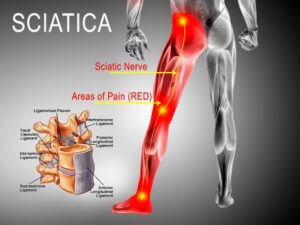Can walking with sciatica be helpful?
Sciatica, characterized by pain that radiates along the sciatic nerve, can be an excruciating condition, often accompanied by numbness, tingling, or weakness in the lower back, buttocks, and legs. Many individuals wonder whether walking—a seemingly simple and common exercise—is beneficial or potentially harmful for sciatica sufferers.

Understanding Sciatica:
Before delving into the benefits and risks of walking for sciatica, let’s understand the basics of this condition. Sciatica typically arises from compression or irritation of the sciatic nerve, which extends from the lower back down through the buttocks and into each leg. This compression can result from various factors, including herniated discs, bone spurs, spinal stenosis, or even muscle spasms.
The Benefits of Walking:
Contrary to what one might assume, walking offers several benefits for individuals grappling with sciatica:
1. Improves Blood Circulation:Walking helps promote better circulation, which can aid in reducing inflammation and facilitating the delivery of nutrients and oxygen to the affected areas.
2. Enhances Flexibility and Mobility:Gentle walking can help loosen tight muscles and improve flexibility in the lower back and legs, potentially alleviating some of the stiffness and discomfort associated with sciatica.
3. Stimulates Endorphin Release:Engaging in low-impact exercises like walking prompts the release of endorphins—natural pain-relieving hormones—helping to mitigate the perception of pain.
4. Maintains Weight Management:Maintaining a healthy weight is crucial for managing sciatica, as excess weight can exacerbate pressure on the spine and aggravate symptoms. Regular walking, as part of a balanced exercise routine, can aid in weight management.
5. Promotes Mental Well-being:Physical activity, including walking, has been shown to have positive effects on mental health by reducing stress, anxiety, and depression—common issues that may accompany chronic pain conditions like sciatica.
Precautions and Tips:
While walking can be beneficial for many individuals with sciatica, it’s essential to approach it with caution and mindfulness. Here are some tips to help you make the most of your walking routine while minimizing the risk of exacerbating your symptoms:
1. Start Slowly:If you’re new to walking or haven’t exercised in a while, begin with short walks at a gentle pace. Gradually increase the duration and intensity as your strength and endurance improve.
2. Pay Attention to Posture:Maintain proper posture while walking to avoid putting undue strain on your back. Keep your head up, shoulders back, and abdomen engaged. Avoid slouching or leaning forward excessively.
3. Choose Supportive Footwear:Invest in supportive, cushioned footwear that provides adequate shock absorption and helps distribute pressure evenly across your feet and lower limbs.
4. Listen to Your Body:If walking exacerbates your pain or discomfort, don’t push through it. Pay attention to your body’s signals and modify your activity level or technique as needed.
5. Incorporate Stretching:Before and after walking, perform gentle stretches targeting the muscles of the lower back, hips, and legs to improve flexibility and reduce tension.
6. Consult with a Healthcare Professional:Before initiating any exercise regimen, particularly if you have underlying health conditions or concerns, consult with a healthcare provider or physical therapist for personalized guidance and recommendations.
Conclusion:
In conclusion, walking can be a valuable component of a comprehensive approach to managing sciatica, offering numerous physical and mental health benefits. However, it’s essential to approach it mindfully, paying attention to your body’s cues and taking precautions to prevent exacerbating your symptoms. By incorporating walking into your daily routine while following these guidelines, you can potentially alleviate discomfort, improve mobility, and enhance your overall well-being amidst the challenges of sciatica. Remember, consistency and moderation are key, so lace up your shoes, take a stroll, and embark on the path to relief and recovery.
Stay Up to Date on News and Education
Copyright Spine Performance Institute 2023 | Privacy Policy